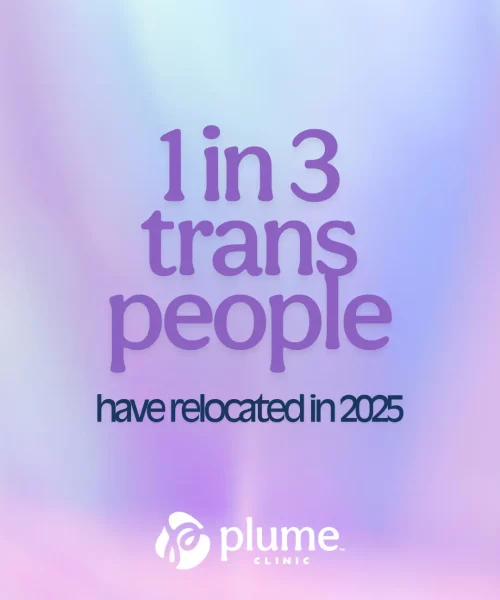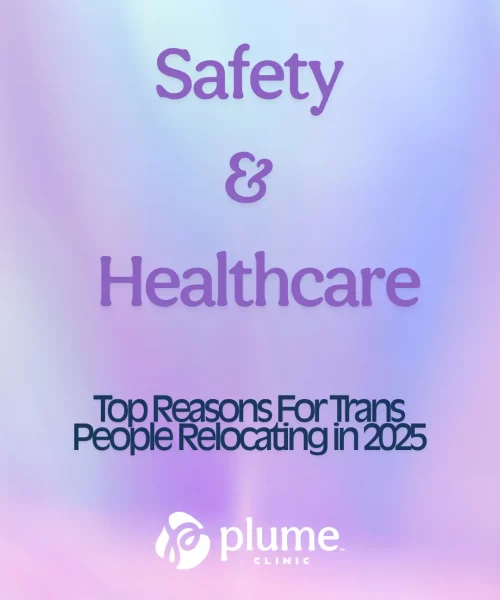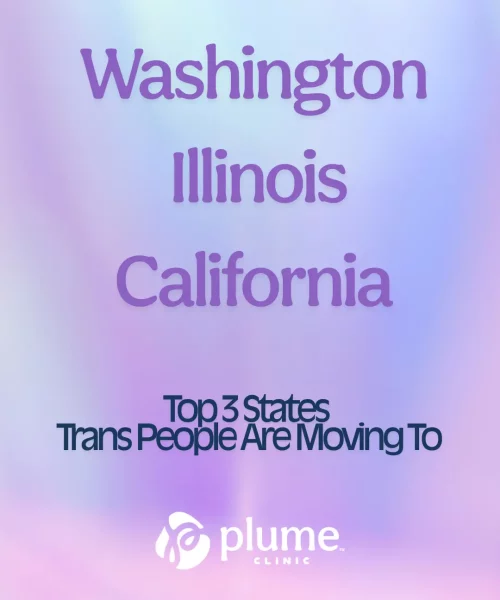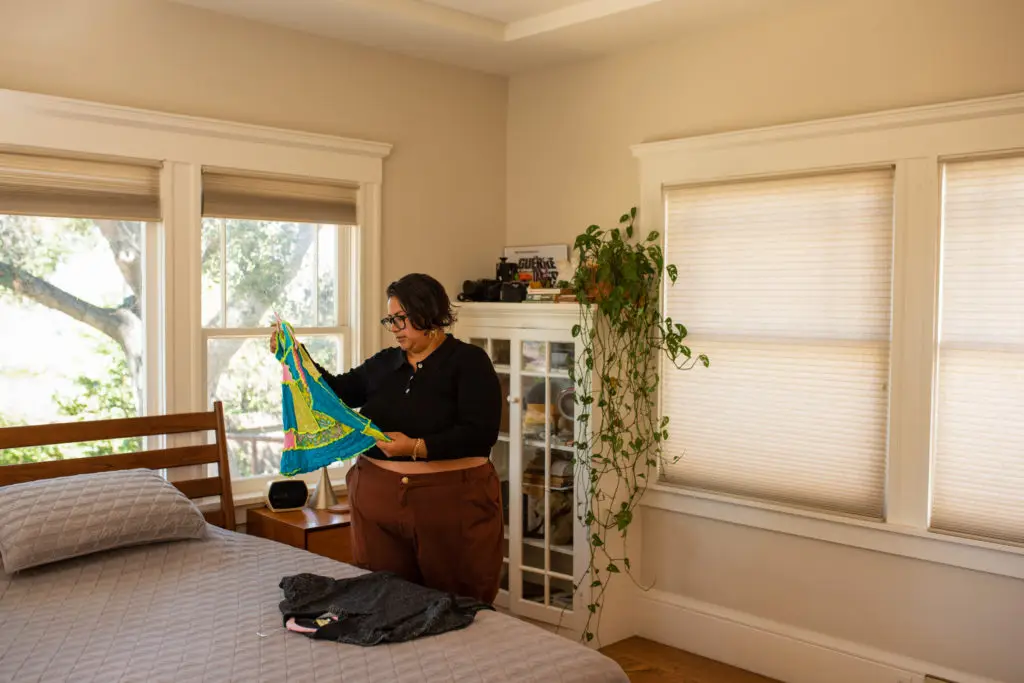Trans people are moving. We’ve been hearing it in conversations with friends, in online discussion groups, and from national research. For some, that move is about finding safety. For others, it’s about getting (or keeping) access to gender-affirming care, being closer to community, or making life more affordable.
In July, we asked over 2,200 of you about your recent moves, your reasons for staying or going, and where you’ve landed (or where you’d like to go next). The results tell a clear story: relocation is a major reality for our community right now, and safety and healthcare are at the heart of it.

In the past 12 months, 28.3% of survey respondents moved to a different city or state.
And for those who haven’t moved yet? The idea is still very much on the table. Among respondents who stayed put, just over half (51.1%) said they’re considering moving in the next year. Another 21.8% aren’t sure yet. That means almost three-quarters of folks who haven’t moved are at least thinking about it.
Why We’re Moving: Safety Leads, Healthcare Follows

Whether people are actually moving or simply making plans, the reasons speak to urgent realities we’re facing.
For those who moved, safety concerns were the number one reason, cited by 43% of movers. This is largely a response to the very real danger trans people face in certain states and communities.
The second most common reason was access to gender-affirming care (16.2%). In many cases, this isn’t just about finding a clinic with shorter wait times. It’s about moving somewhere that hasn’t banned or restricted the care you need.
Other reasons for moving included:
- Other personal factors: 12.2%
- Job or school: 11%
- To be near a support system: 8.9%
- Cost of living: 8.7%
For those still considering a move, the priorities were similar but with slightly different percentages:
- Safety concerns: 45%
- Access to gender-affirming care: 21.2%
- Other reasons: 10.7%
- Cost of living: 9.6%
- To be near a support system: 8.8%
- Job or school: 4.7%
The overlap between movers and planners makes it clear: safety and healthcare aren’t just “nice to have” considerations. They are the deciding factors in whether to stay or go.
Where Trans People Are Headed, and Where Trans People Are Leaving

Looking at the top destinations, it’s no surprise that people are gravitating toward states seen as safer and more affirming:
- Washington – 9.9% of movers
- Illinois – 9.1%
- California – 7.6%
- Colorado – 6.8%
- Oregon – 6%
These states tend to have stronger protections for trans people, better access to gender-affirming care, and more supportive community networks.

On the flip side, the states with the highest outflow of trans residents were:
- Texas – 19.7%
- Florida – 12.1%
- Georgia – 6.5%
- California – 4.1%
- Tennessee – 4.1%
Texas and Florida, in particular, have passed or proposed laws restricting trans rights and access to care. These numbers align with national advocacy reports showing that hostile legislation often drives migration patterns.
Moving From Suburbs and Countryside to Cities
Another clear trend: people are leaving suburban and rural areas for urban centers. Among movers:
- Moved from suburban: 44.2%
- Moved from rural: 29.2%
- Moved from urban: 24.9%
And where did they land?
- Urban: 45.9%
- Suburban: 33.8%
- Rural: 15.3%
For many, cities offer more than just access to services. They provide community, safety in numbers, and in some cases, a greater ability to live authentically without as much scrutiny.
The Trend Isn’t Slowing Down
If current numbers hold, we’ll see continued, and possibly increased, relocation in the coming year. Among those still in place, more than half are considering a move, and safety and healthcare remain the top motivators.
For states gaining residents, like Washington, Illinois, and Oregon, this could mean growing trans communities and greater demand for resources. For states losing residents, it’s a signal that hostile environments are pushing people out.
What This Means for Our Community
Relocation is more than just packing boxes, it’s a life-changing decision that can affect everything from your healthcare to your mental health to your support network. For some, moving brings relief and new opportunities. For others, it’s a difficult last resort.
Plume Clinic is a virtual gender-affirming care clinic that is available in 47 states across the U.S., making it easy to take your care with you. Whether you’re staying put, making plans, or settling into a new place, this trans relocation survey reminds us that we’re part of a larger movement shaped by the search for safety, access, and community.



